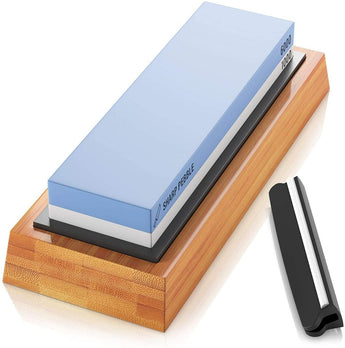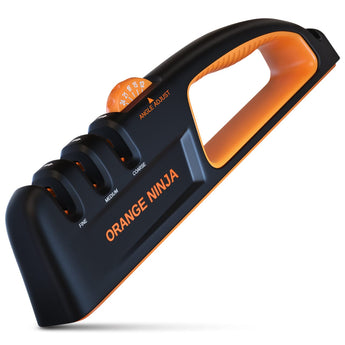
Whetstone is derived from the word 'whet', which means to sharpen a blade. These stones are one of the most popular methods used for sharpening tools and are commonly used to sharpen and maintain the edges of knives and tools. Because they are used in sharpening different appliances, they are designed in different shapes, sizes, and different materials.
What is grit?
Because different whetstones are designed to sharpen different items, the abrasive stone particles have different sizes. The whetstone’s digit or grit size is assigned and is usually labeled, which details the particle's spatial density. The lower this assigned number is, larger particles are more spaced apart and therefore have a rougher surface. It is, therefore, best used on blades that are very dull or damaged.
This information is vital as it helps to understand which whetstone can be used on which type of tools. It also helps to prevent wasting time trying to sharpen a tool using the wrong whetstone. Most importantly, having this information protects the tools from being damaged, which occurs when the wrong type of whetstone is used on a tool.
Brackets of grits have four main stages, categorized based on their different ability to sharpen your knives and tools. Here is a more detailed explanation of the different brackets to fully understand which whetstone can be used to sharpen and polish.
Coarse Whetstones: #1000 or less
Whetstones in this bracket have a rough surface because of their low density. They are the best to use on knives that may be extremely dull, have lost their edge, or have damages such as chips or nicks on the blade. Whetstones within this grit bracket can smooth out the cracks on the knife.
A word of caution: These whetstones tend to be very abrasive and don’t leave the best finish on the blade. They should therefore not be used for frequent general sharpening. They may damage the knife upon application of high levels of pressure due to how low their grit is. It is also important to know that lower grit takes a lot of material off the blade during sharpening.
Medium Stones: #1000 - #3000
This grit whetstone is the best starting point for helping restore the sharp edges of your blades. These are less coarse and best for those who may wish to sharpen their knives regularly.
Finishing Stones: #4000 - #8000
If you intend to sharpen and maintain very fine edges simultaneously, then the #4000 - #8000 range should be your go-to choice of a whetstone. Within this range, there is numerous application depending on the type of blade and its application. For instance, for someone using a western knife, then 1000 and 6000 grit whetstone will be sufficient to meet their sharpening and edge maintenance needs. The 4000-6000 grit range is great for someone using their knife to cut meat. In this case, using whetstones whose grit is 8000 and above may result in the knife bending while cutting through muscle. However, if the knife is used just for slicing and chopping fruits and vegetables, then the 8000 grit is recommended.
Important tip after using water-stones:

The stones should be left to dry completely. Failure to completely dry the stone promotes the growth of mold and affects its ability to sharpen well as time goes by.



